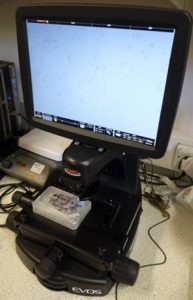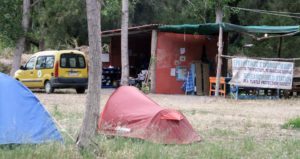Profile
Marcus Johns
Second place... But what an amazing experience! Bring on next weekend for more public engagement!
Curriculum Vitae
-
Work History:
Seriously Fun Swimming Schools, Mast Carbon
-
Current Job:
1st year PhD student
-
Employer:
Centre for Sustainable Chemical Technologies, University of Bath
-
My Work
I’m a PhD student looking at fixing damaged hearts by making ‘bandages’ out of plants
-
Read more
The aim of my PhD (Doctorate in Philosophy) is to design new materials based on chemicals found in plants and the shells of crustaceans (prawns and crabs) that will help the growth of new heart cells to repair the damage caused by heart attacks.
The chemicals I’m especially interested in are called cellulose and chitosan. Both of them belong to a group of chemicals called ‘polysaccharides’, which are basically lots of sugar particles connected together to form a long chain. The main difference between cellulose and chitosan is that chitosan contains nitrogen whilst cellulose doesn’t. The presence of the nitrogen is important because it helps the cells grow. However, I can’t make my materials only out of chitosan as it is too weak, so I also use cellulose because it is much stronger.
Cells are very fussy when it comes to finding materials that they like to grow on and different cells prefer different materials – kind of like people and different chairs; some people like a sofa which you sink into (nerve cells), others like a really hard chair (bone cells) and some like somewhere in-between (soft tissue cells). This means that I need to be able to control different features of the material to make the heart cells want to grow on it. These include its strength, its roughness, its hardness and the amount of nitrogen present. In order to do this I vary how much cellulose and chitosan I use; the method of drying the material, and whether I make any changes to the material after creating it.
-
My Typical Day: Most days I’m in the lab working or reading books around my subject. There’s also a lot of time spent in meetings
-
Read more
Most days I get into my office at university between 9 and 11 in the morning depending on when I get up (I’m not really a morning person and I like my bed). I spend most of my time in the lab creating materials or seeing whether cells grow on the materials I make. I also spend a fair amount of time reading books and other literature to make sure that I’m not repeating someone else’s work and to help come up with new ideas for my project. I’m involved in a few other projects, so spend time in meetings discussing them, and in July myself and a few other students will be at the Royal Society Summer Science Exhibition so am currently involved in creating one of the exhibits that we’ll be showing there.
This is me working with my materials. At the time I was making sure that the cells that I’d grown on the materials I made stayed in place, a process called ‘fixing’. I’m working in a ‘biohood’, which is basically an area that makes sure that bacteria and other microbes can’t get onto the materials and affect the growth of the cells that I’m working with. The materials that I’ve made with the cells on are in the clear boxes with writing on the lids in front of me.
Here I’m looking at the cells grown on my materials with a digital confocal microscope. A confocal microscope is a microscope that allows you to view 3D objects at different focal points, meaning that you could put lots of images together and create a 3D image from them giving you lots of information about how the cells and the material are affecting each other. I really appreciate the large screen; it’s much easier than having to peer down the viewfinder of a normal microscope!
I generally leave the office round 6 in the evening, although this doesn’t mean that I leave university. I’m involved in the musical and theatrical societies and play alto saxophone in the concert band, so have a rehearsal or workshop in the evening at least twice a week. I also enjoy going out with my friends and can often be found in a local music venue watching a band.
However, I’m actually currently in Greece volunteering for a charity called Archelon – The Sea Turtle Protection Society of Greece. This changes my work schedule slightly as I’m living on a camp-site and have a number of duties that need doing. In the morning we go on ‘morning surveys’, which involves walking a section of the beach looking for turtle nests and protecting them. At night we have ‘night surveys’ where we walk the beach looking for turtles laying their eggs. When we find one that has just finished laying we take her measurements and tag her with a plastic tag, a metal tag and a microchip so that we can identify her again when she lays nests in the future. We also have other duties round the camp-site such as cooking dinner for everyone and preparing the equipment required for protecting the nests. Unfortunately I can’t completely escape work, so will also be writing-up the experiments that I’ve done so far this year.
I currently am not in the UK so can’t show you an image of my actual office – it’s not that interesting anyway; my desk currently has 3 piles of paper and a potted plant on it. But here is an image of my current ‘office’ on the campiste that I’m in. As the sign says, the conservation work that I’m doing is research. It may not affect my work directly, but the work that myself and the other volunteers do will be published by people working in sea turtle conservation.
-
What I'd do with the money
I’d use it to help develop a project that brings art and engineering together
-
Read more
I don’t know about you, but I think there really is something quite beautiful about the technology that we surround ourselves with. I’m thinking of the patterns on circuit boards that look like miniaturised cities; of the way that a few springs and cogs can combine to make something that tells you the time; of the sound of an engine, or the way that we can make tiny little microbes make materials for us that we can use for clothes or building materials or food or saving people’s lives. I think there’s lots of other people that enjoy the same things and I also think that even more people would enjoy them if they understood how they worked and may not be so scared about them, for things like nuclear power or GM (genetically modified) crops.
For this reason I want to create a project that allows people to appreciate the beauty of technology, whilst at the same time learning about it and discovering why it’s important. To be honest I’m not entirely sure how I want to go about doing this and so would appreciate your input. The main idea is to work with an artist to create a project or piece of work that has been influenced by my research. But whether this would be a standalone piece or part of a larger project remains to be seen, and I would need to work out how I would incorporate the public engagement aspect into it.
-
My Interview
-
How would you describe yourself in 3 words?
Discover, Explore, Learn
What's the best thing you've done in your career?
I’ve recently come up with a model that helps guess whether certain chemicals will dissolve cellulose and how well they’ll do it. Doesn’t sound that amazing, but could help future engineers. (And get me fame and riches right? No…)
What did you want to be after you left school?
A scientist with really crazy hair that made things explode all the time (almost there)
Were you ever in trouble at school?
Only when I was caught reading other books behind my French textbook
If you weren't doing this job, what would you choose instead?
The computer programme at school told me that I should become a ‘French Polisher’
Who is your favourite singer or band?
The Strokes – I can listen to them all day but I like a lot of different music genres
What's your favourite food?
Either seafood or roast pork, I can never decide
What is the most fun thing you've done?
Whitewater rafting in Ecuador and being Sherlock Holmes in a university play come to mind
Tell us a joke.
What was left when the cheese factory burnt down? De-brie!
-



